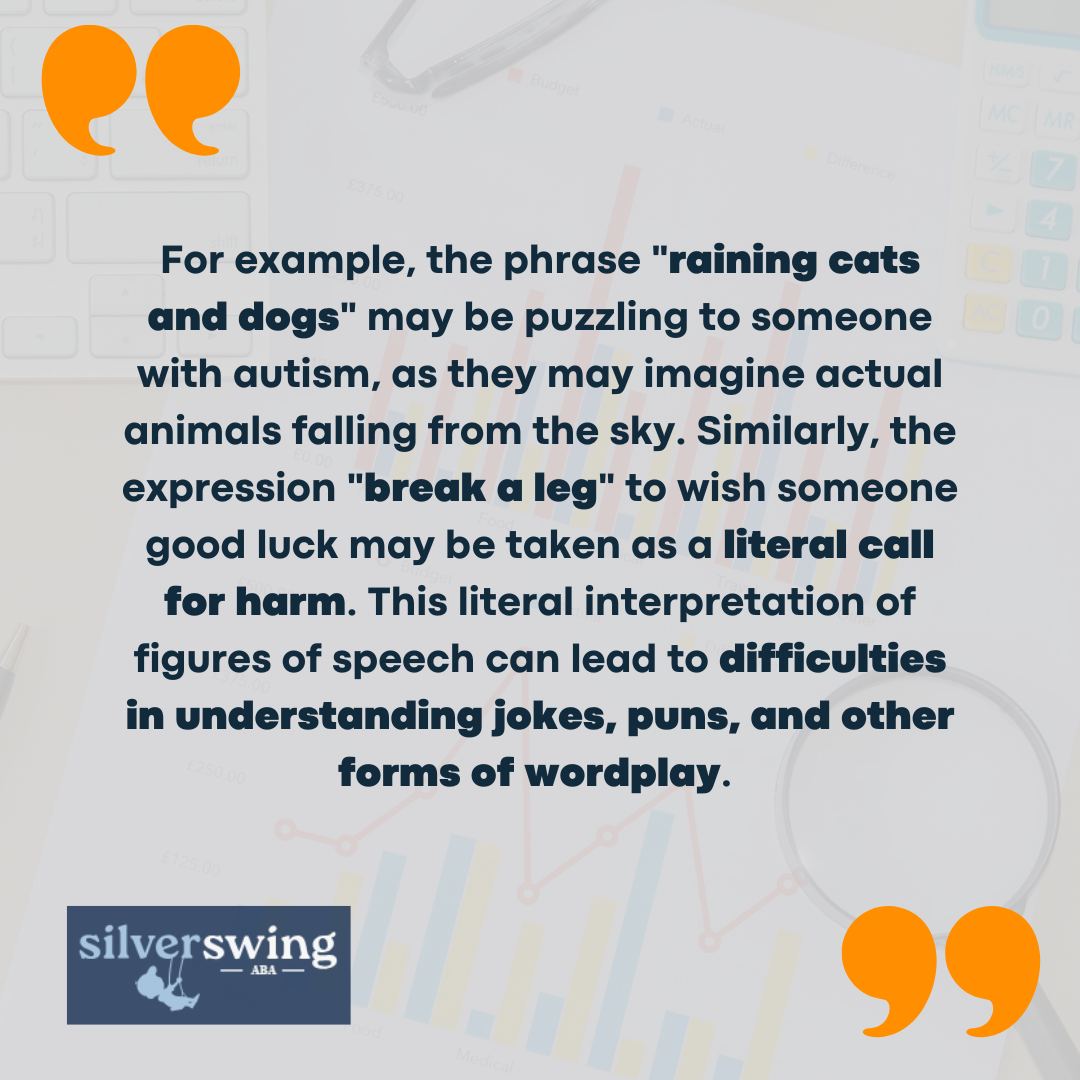Understanding the concept of literal interpretation is crucial in comprehending the cognitive style of individuals with autism.
Children and young people with autism often struggle with understanding abstract concepts due to their unique brain structure. This makes it challenging for them to comprehend non-tangible ideas or objects. They are considered concrete thinkers who focus on the “here and now,” which can result in taking words or phrases literally.
Besides, autistic individuals have a tendency to interpret language in a literal manner, even when speakers intend to be understood non-literally. This literalist bias is observed in many individuals on the autism spectrum, regardless of their grammatical abilities and breadth of vocabulary.
It is a core feature of autism and can pose challenges in various aspects of communication and social interactions.

What Literal Thinking Means in Autism
When someone with autism takes language literally, it means they interpret words and phrases exactly as they are spoken, without understanding the intended figurative or metaphorical meaning. This literal thinking style can lead to misunderstandings and misinterpretations in social situations, as individuals with autism struggle to grasp the nuances of colloquial language and non-literal expressions.
Children and adults with autism may struggle with figures of speech, such as idioms, metaphors, and similes. These linguistic devices rely on the use of words or phrases that convey a meaning different from their literal interpretation.
This literal thinking style also impacts social interactions, particularly in situations where sarcasm, irony, or subtle cues are involved. Autistic individuals may have difficulties understanding the intended tone or the underlying meaning behind sarcastic remarks.
They may take statements at face value and struggle to recognize the intended humor or irony. This can result in social misunderstandings and challenges in building relationships.

Challenges in Non-Literal Language
For individuals with autism, non-literal language can pose significant challenges as they tend to interpret phrases and expressions in a literal manner, which can lead to misunderstandings and misinterpretations in social interactions.
Figures of speech, such as idioms, metaphors, and similes, rely on non-literal language to convey meaning. However, individuals with autism spectrum disorder may struggle to understand these linguistic devices. They tend to interpret figures of speech literally, which can result in confusion and miscommunication.

It’s important for caregivers, educators, and peers to be aware of this type of thinking and provide clear explanations or alternatives when using non-literal language.
Autistic individuals may also experience challenges in accurately interpreting and understanding non-literal language during communication. They may focus primarily on the words being spoken, rather than considering the tone of voice, facial expressions, or body language that often accompany the message.
This narrow focus on verbal language can result in misinterpretations or missing the intended meaning behind a statement.
To support effective communication with individuals on the autism spectrum, it is important to be mindful of these challenges. Using clear and direct language can help minimize misunderstandings. Additionally, providing visual cues or supplementary explanations can aid in conveying non-literal messages more effectively.

Impact on Social Interactions
The literal thinking style of individuals with autism can result in misunderstandings during social interactions. They tend to focus on what is actually said rather than what is implied or intended.
Additionally, autistic individuals may struggle with grasping the subtleties of indirect communication. They may miss social cues and non-verbal cues, making it challenging for them to understand the underlying meaning behind someone’s words or actions.
This can affect their ability to engage in meaningful conversations and build social connections.
Difficulties with Sarcasm and Tone
Sarcasm and tone of voice pose particular challenges for individuals with autism. Sarcasm relies on using words to convey the opposite of their literal meaning. Autistic individuals may have difficulty detecting the intended sarcasm and may interpret the words literally.
Similarly, understanding and interpreting tone of voice can be challenging for individuals with autism. They may struggle to detect the emotional nuances conveyed through changes in pitch, intonation, and emphasis.
This can make it challenging for them to accurately perceive the speaker’s intended emotions and can impact their ability to respond appropriately.

Strategies for Support
Luckily, there are several strategies that parents and caregivers can employ to support autistic individuals.
One effective strategy for supporting individuals with ASD is to provide clear and direct instructions. By using straightforward language and avoiding ambiguity, you can help individuals understand what is expected of them. This can be particularly important when giving directions or explanations that involve colloquial phrases or figures of speech.
Clear instructions can include breaking down tasks into smaller steps, using visual aids or written instructions, and providing specific details.
By being explicit and precise in your communication, you can minimize the potential for misinterpretation and confusion.
Since autistic individuals may struggle with interpreting tone of voice and body language, training in non-verbal communication can be beneficial as well.
Non-verbal communication includes aspects such as tone of voice, facial expressions, gestures, and body language. These cues often convey additional information and context in conversations.
However, individuals with ASD may have difficulty interpreting these cues due to sensory issues and challenges in processing non-verbal information.
Training in non-verbal communication can involve explicit instruction on recognizing and understanding different aspects of non-verbal cues. This can include activities such as role-playing, video modeling, and social skills training.
By improving their ability to interpret non-verbal communication, individuals with ASD can enhance their overall understanding of social interactions and reduce their reliance on literal thinking.
Understanding the communication dynamics associated with literal thinking in autism is crucial for effective communication and building positive relationships.




